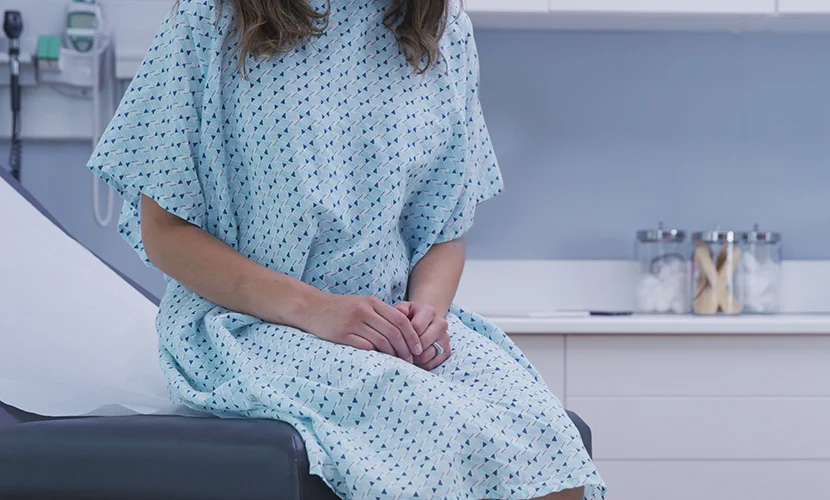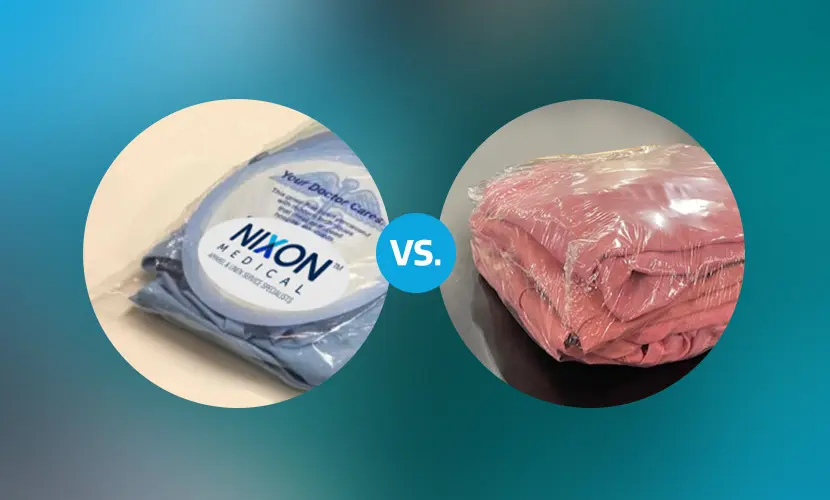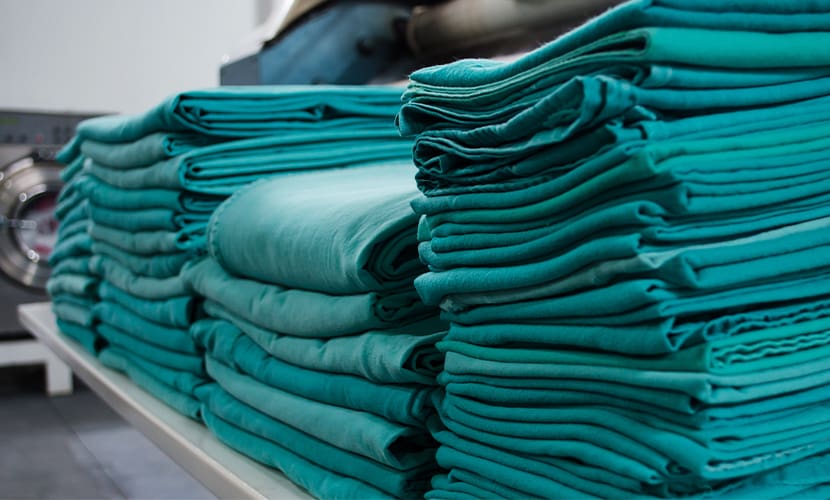What Patient Gowns Are Right for Your Healthcare Facility?
February 21, 2022 by Nixon Medical
Think all patient exam gowns are created equal? Think again.
Patient gowns come in a wide variety of styles and materials that serve distinct purposes. There are gowns that provide access to specific areas of the body, and there are gowns that protect against bodily fluids. Other gowns exist to fit children or larger patients, as well as budget constraints and processes.
Outpatient practices, such as imaging, women’s health, or pediatrics, will have different needs than inpatient centers and hospitals. And what’s more, clinicians require different gowns than their patients.
Use this guide to understand the attributes and use cases of different patient gowns.
Types of Patient Exam Gowns
Standard Gowns
Standard gowns are what most patients wear during their appointment at an outpatient center. These gowns provide patients with modesty and comfort while allowing clinicians easy access to the patient for treatment and check-ups. There are a variety of styles; here are some of the most common:
- Complete coverage gowns offer greater coverage in length and width. These are used in most healthcare facilities for general treatment and check-ups.
- Oversized gowns are ideal for post-operative recovery when patient mobility is limited, and greater flexibility is needed. These gowns are also ideal for larger-sized or bariatric patients.
- Front-wrapping gowns fit like robes and are often used in women’s practices like OB/GYN facilities.
- Cape gowns fit like jackets with a front opening and tie closure. These gowns are hip-length and ideal for appointments where the patient only needs to undress from the waist up.
- Three-armhole gowns provide complete coverage and are a great option for patients who may have trouble using tie closures, or in scenarios where ties may present a safety hazard to the patient.
- Economy gowns are a low-cost option for high-volume healthcare centers, such as medical imaging.
See more details about each of these standard gown types.
IV Gowns
IV gowns provide easy access to IV lines and patient-worn monitors with snap-sleeve closures and rear-tie closures. These gowns are often oversized, giving extra room between the fabric and IV lines.
Pediatric Gowns
Pediatric gowns come in a variety of styles and are designed to make children feel comfortable and safe when wearing them. The gowns often have openings for monitors and IVs, and are offered in fun patterns like cats, dogs, and tie-dye to improve the child’s patient experience while at your office.
Surgery Gowns
Surgery gowns are fluid-resistant, protecting the wearer from bodily fluids, bloodborne pathogens, and risks of cross contamination. Surgery gowns can be static-resistant and/or offer antistatic properties to protect the wearer from electrically charged equipment. Surgery gowns are longer in length and sometimes feature snap closures for added safety. Surgery gowns are often worn by clinicians.
Some gowns are compliant with standards set by the Association for the Advancement of Medical Instrumentation (AAMI), which include four levels of barrier performance. For example, Nixon Medical’s Unisex Static-Resistant and Fluid-Resistant Surgery Gown is AAMI Level 1 rated.
Disposable and Reusable Gowns
Most patient gowns are available in disposable and reusable options. Healthcare facilities have the freedom to choose which type of material works best for their patient needs, treatment types, budget, and processes. Reusable patient gowns are typically offered within a healthcare linen rental program that delivers, launders, and manages a facility’s linen and apparel inventory. If you’re curious how a medical linen program works, here’s a quick overview of our program.
So, how do reusable patient gowns stack up to disposable ones? For decades, healthcare professionals have researched and debated the benefits of reusable medical apparel over disposable products. Today, many experts agree that reusing medical textiles is the optimal method. Some of the primary benefits of reusing medical gowns, linens, and other textiles include maintaining a base level of Personal Protective Equipment (PPE) during conventional and crisis capacity times like the pandemic, as well as improving patient and staff satisfaction, enhancing environmental quality, reducing waste, and controlling costs.
In this case study, a 30+ hospital system chose to stay with reusable medical products over disposable ones, saving at least $1.4 million a year. In their estimates, single-use isolation gowns would cost 25-50% more than reusable gowns, not to mention the costs of disposal.
Need another reason to go with reusable patient gowns? The Journal of the American Medical Association urges healthcare organizations to adopt a “reduce and reuse” culture to control inventory costs and support financial sustainability.
Stock Your Healthcare Facility with the Right Gowns
We know patient exam gowns are functional, and we know that choosing reusable, linen gowns can bring benefits to your outpatient facility—but it’s also important to consider the patient experience.
While you might be able to get by with using a standard gown for a specific procedure, the patient will likely have a better experience if they can wear a gown that specifically meets the need of the treatment and offers them coverage in other areas. Comfort, modesty, and functionality can all work together.
If there’s room to improve the variety of your patient gown inventory, contact us. We would love to speak with you about making your patient gown inventory work best for you and your patients.



